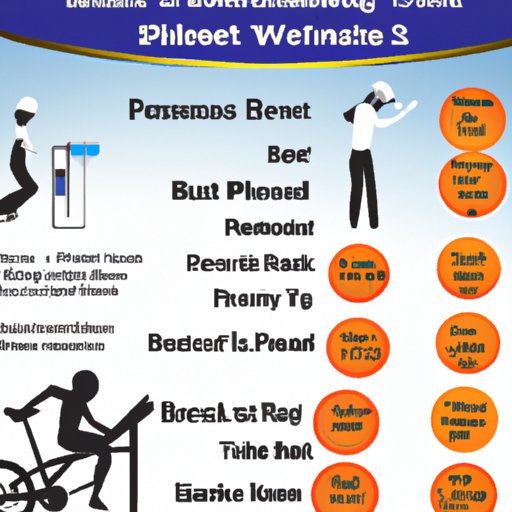Introduction
High blood pressure, also known as hypertension, is a condition in which the force of the blood pushing against the walls of the arteries is too high. It is an extremely common condition and can increase the risk of developing serious health problems such as heart disease and stroke. However, with proper treatment and lifestyle changes, such as exercising regularly, many people are able to manage their blood pressure levels and lead healthy lives.
Exercising with high blood pressure can be beneficial, as it can help lower blood pressure levels and reduce the risk of developing other health problems. Regular physical activity can also improve overall cardiovascular health, boost mood, and reduce stress. However, it is important to exercise safely and to take certain precautions when engaging in physical activity with high blood pressure.
Tips for Exercising Safely With High Blood Pressure
Before starting any type of exercise program, it is important to check with your doctor to make sure that it is safe for you to do so. Your doctor may have specific recommendations based on your individual health and medical history. Additionally, it is important to start slowly and gradually increase the intensity of your workouts. Start with light activities such as walking and gradually progress to more intense activities like running or weightlifting. It is also important to listen to your body and stop if you experience any pain or discomfort.
Low-Impact Exercises for People With High Blood Pressure
When exercising with high blood pressure, it is best to stick to low-impact activities. These types of exercises involve minimal impact on the joints and muscles and are less likely to cause any harm. Some examples of low-impact exercises include walking, swimming, yoga, and cycling. Walking is a great way to get started, as it is easy to do and requires no special equipment. Swimming is also a great option, as it provides a full-body workout and is gentle on the joints. Yoga is another good choice, as it is a low-impact exercise that can help improve flexibility and balance. Finally, cycling is a great way to get some exercise without putting too much strain on the body.

How to Monitor Your Blood Pressure While Exercising
It is important to monitor your blood pressure while exercising with high blood pressure. To do this, you can use a home blood pressure monitor. This device allows you to track your blood pressure before, during, and after your workout. It is important to keep track of your progress over time and to consult with your doctor if you notice any changes in your blood pressure levels.

Common Mistakes to Avoid When Exercising With High Blood Pressure
When exercising with high blood pressure, it is important to avoid making common mistakes. One of the most common mistakes is to overdo it. This can put unnecessary strain on your body and increase your risk of injury. It is also important to pay attention to signs of fatigue and to stop if you feel tired or overwhelmed. Finally, it is important to stay hydrated by drinking plenty of water before, during, and after your workout.

Foods to Eat Before and After Exercising With High Blood Pressure
Eating the right foods before and after exercising is important when managing high blood pressure. Eating a nutritious snack before your workout can help fuel your body and give you energy. Good pre-workout snacks include whole grains, fruits and vegetables, and lean proteins. After your workout, it is important to refuel your body with complex carbohydrates, protein, and healthy fats. Examples of post-workout snacks include Greek yogurt, nuts, seeds, and fruit smoothies.
Conclusion
Exercising with high blood pressure can be beneficial, as it can help lower blood pressure levels and reduce the risk of developing other health problems. However, it is important to take certain precautions when engaging in physical activity. Tips for exercising safely include checking with your doctor before starting an exercise program, starting slow and gradually increasing intensity, and listening to your body and stopping if you experience any pain or discomfort. Low-impact exercises such as walking, swimming, yoga, and cycling are all good options for people with high blood pressure. Additionally, it is important to monitor your blood pressure while exercising and to avoid common mistakes such as overdoing it and not drinking enough water. Finally, eating the right foods before and after exercising is essential for managing high blood pressure. Always remember to check with your doctor before starting an exercise program.
(Note: Is this article not meeting your expectations? Do you have knowledge or insights to share? Unlock new opportunities and expand your reach by joining our authors team. Click Registration to join us and share your expertise with our readers.)
